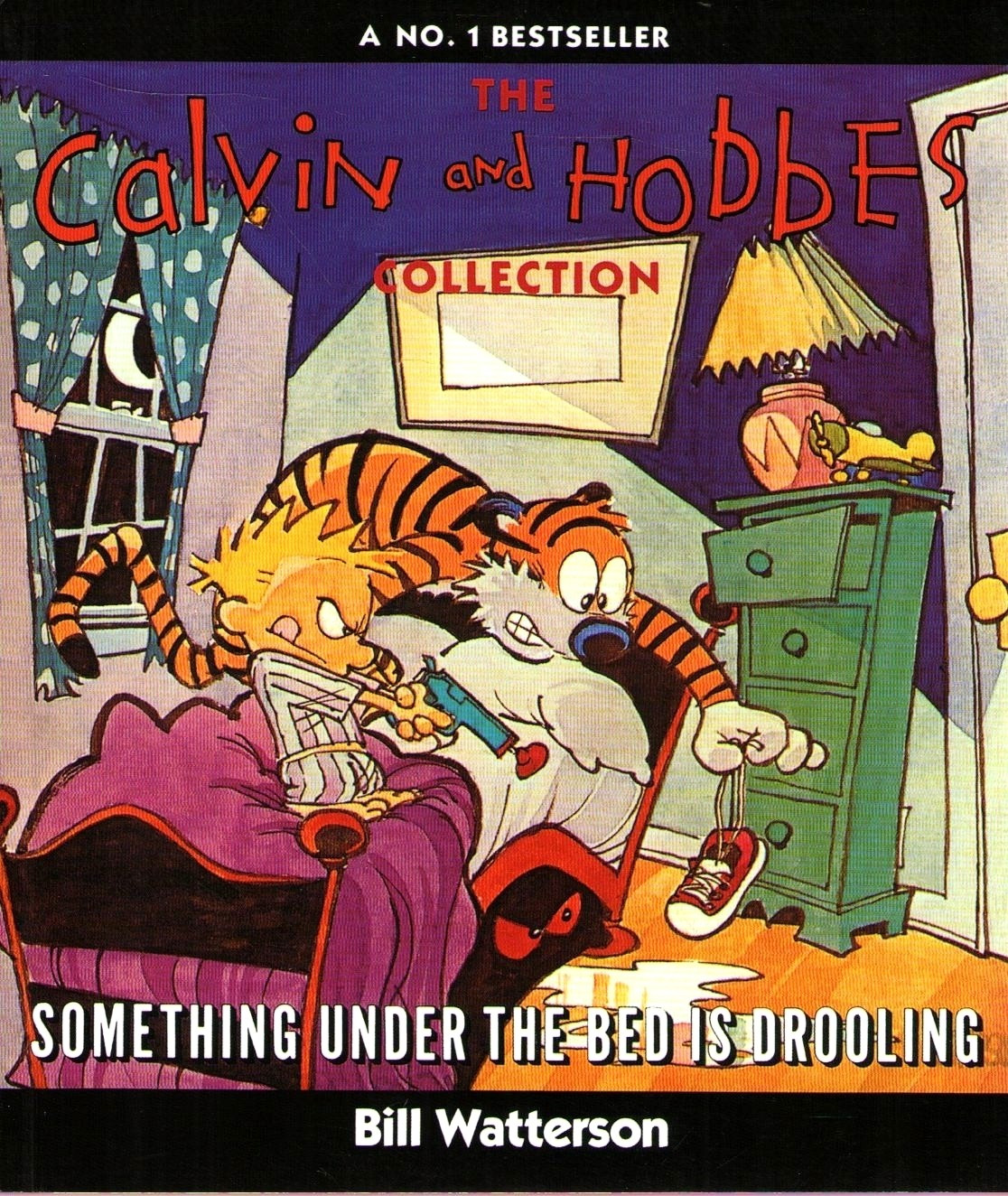I have not yet met a child that does not like books.


Of course, it's easy to like books when there are pictures. That's why I try to insert photos into my posts as much as possible; no one can resist illustrations. Or even photos in the newspaper. So many conversations have been instigated because a child inquired as to a picture in the newspapers that clutter the kitchen table.
It gives me particular joy when a niece (it's usually a niece) requests a book of their own. I feel as though my purpose as an aunt has been fulfilled.
The kinfauna only know how to ask because they have discovered them on the shelves first. I own every Calvin & Hobbes (not the collections, dog-eared copies that survived my childhood), a groaning quantity of Berenstain Bears, Harry Potter (duh), and glorious, glorious Tintin.
When I whispered into Thing 1's ear that I bought for her—after she expressed interest—the original Calvin & Hobbes, Something Under the Bed is Drooling, and Scientific Progress Goes "Boink", the gaze of loving reverence was enough to buoy me for a week.

She couldn't have asked about it if it hadn't been there for her to find.
"Our (Bare) Shelves, Our Selves" by Teddy Wayne makes a case for print media and books to adorn homes—for the sake of the children.
Perhaps the strongest case for a household full of print books came from a 2014 study published in the sociology journal Social Forces. Researchers measured the impact of the size of home libraries on the reading level of 15-year-old students across 42 nations, controlling for wealth, parents’ education and occupations, gender and the country’s gross national product.
After G.N.P., the quantity of books in one’s home was the most important predictor of reading performance. The greatest effect was seen in libraries of about 100 books, which resulted in approximately 1.5 extra years of grade-level reading performance. (Diminishing returns kick in at about 500 books, which is the equivalent of about 2.2 extra years of education.)
Libraries matter even more than money; in the United States, with the size of libraries being equal, students coming from the top 10 percent of wealthiest families performed at just one extra grade level over students from the poorest 10 percent.
The implications are clear: Owning books in the home is one of the best things you can do for your children academically. It helps, of course, if parents are reading to their children and reading themselves, not simply buying books by the yard as décor.
E-reading (as well as music selection) is based on what the seeker is already looking for; print and records mean that one comes across something and discovers something new.

That's the fun of libraries—arbitrarily plucking a book from the shelf which may or may not end up being a winner. But more often than not, it is.
3 comments:
As a librarian, I very much approve of this post! Also, of Tintin (I have almost all the Tintin books). Never much read Calvin and Hobbes, though; they're not so big in the UK.
I loved the Berenstein Bears! And Arthur. My grandmother would give me books as gifts. I agree with you about print vs eBook, but very often a book off the shelf from the library will not be up to my standards which is frustrating. That is why I usually rely on recommendations and reviews.
I love books. It's hard to explain that to someone who doesn't share my affinity. I'm happy you are passing it on to the next generation.
DS: You'd love Calvin. You should read them.
Altie: I've had middling success with both methods.
Yeah, my father doesn't get novels. The last time he read one voluntarily was for college. Doesn't understand.
Post a Comment